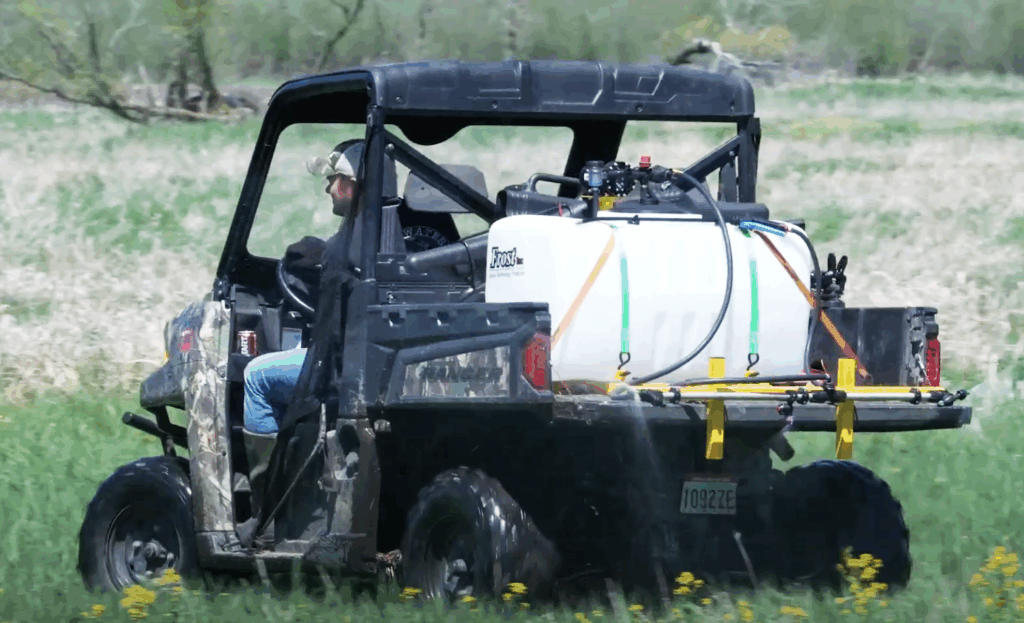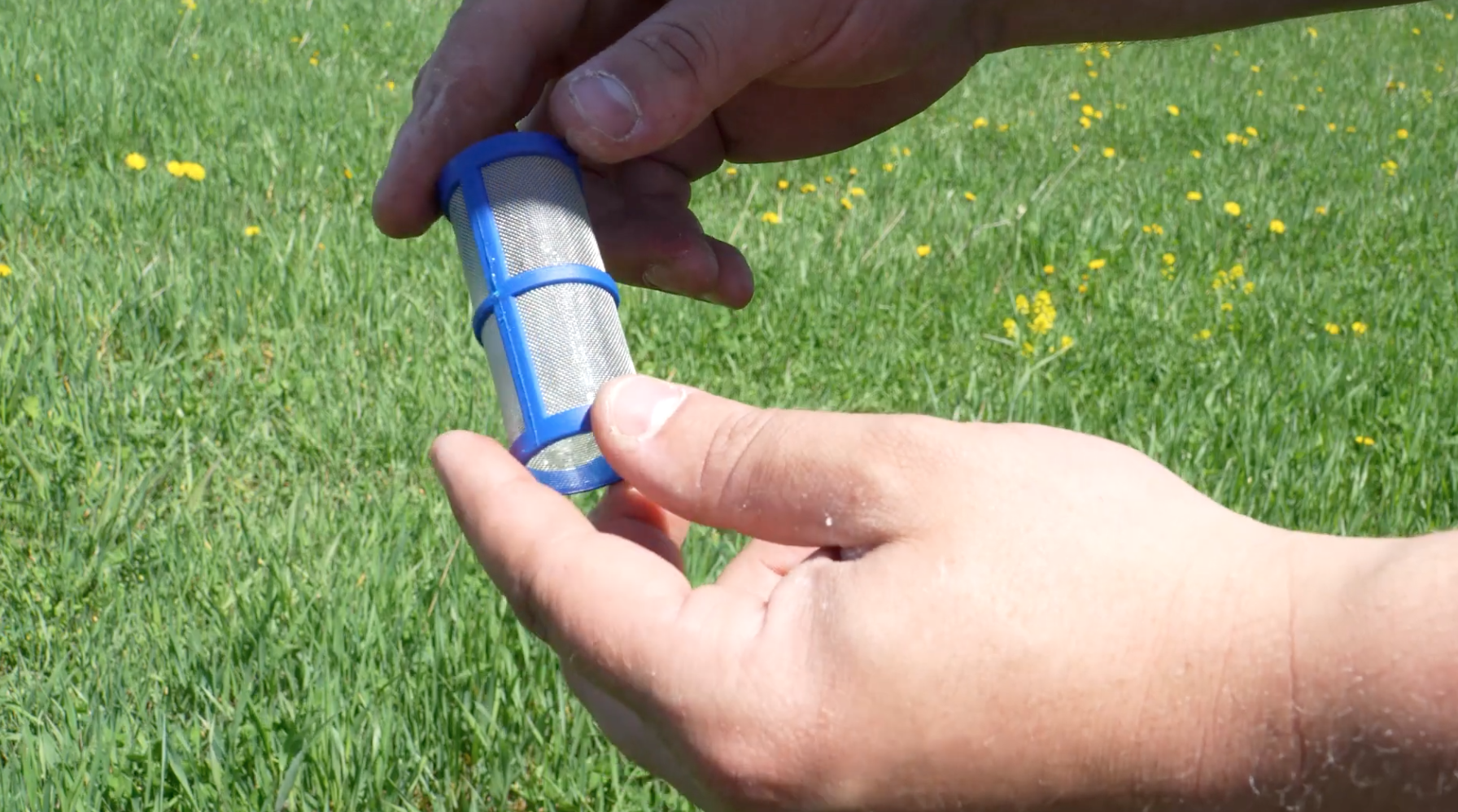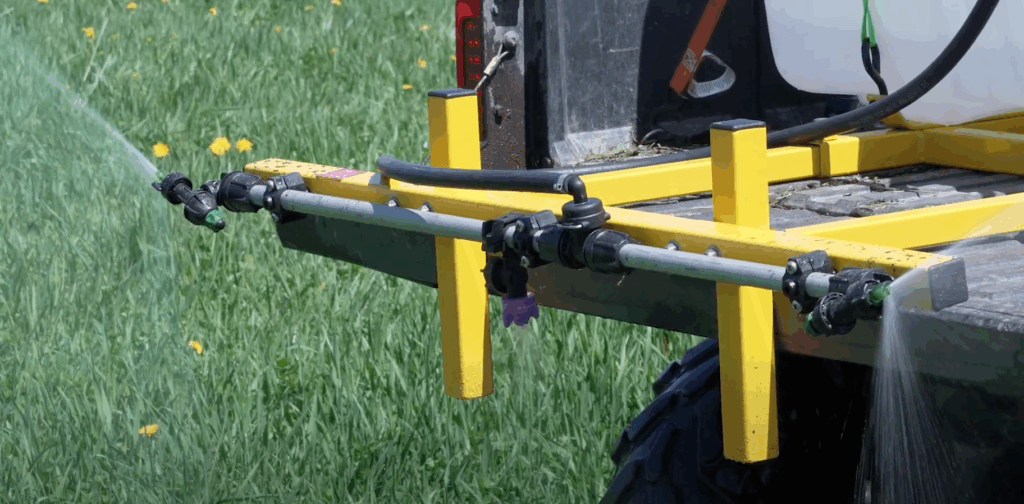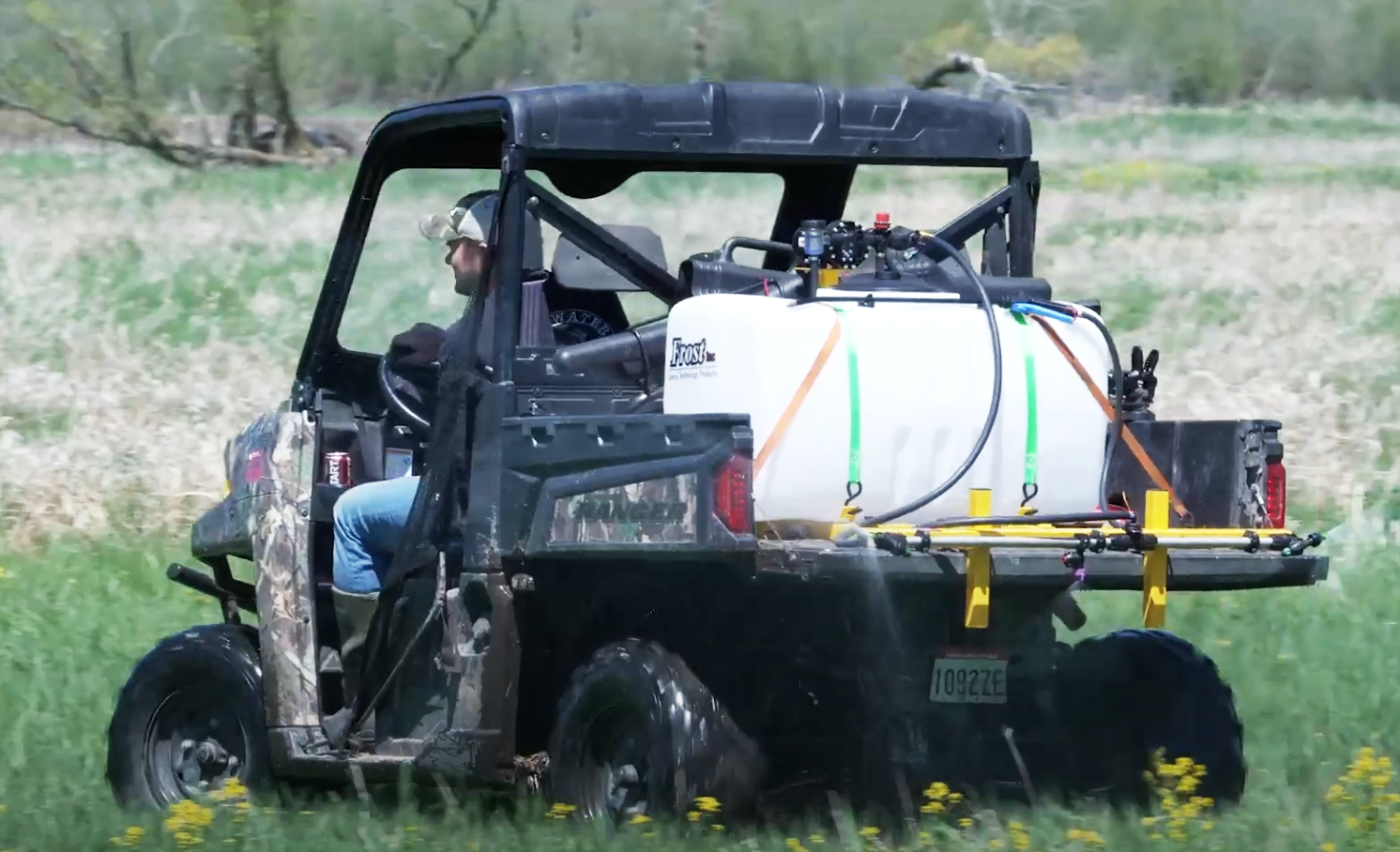Maintaining your sprayer not only helps extend its life but also helps ensure that you do not waste expensive chemicals throughout its lifetime.
Cleaning and Storage
It may sound simple, but keeping your sprayer clean is an important way to maximize the life of your sprayer and maintain a clean, safe work environment for the operator(s). See your operator’s manual or chemical label for complete instructions, and keep these best practices in mind:
- Always triple-rinse. Spray the tank out completely three times, or until the fluid runs clear. All accessories should be rinsed out as well. This will help keep debris out of the tank and ensure that you don’t mix chemicals from different applications.
- Always neutralize according to the recommendations of the chemical manufacturer(s) in addition to rinsing. Neutralizers are still needed to “clean” the machine.
- Clean the OUTSIDE of the sprayer to prevent corrosion caused by chemical residue and ensure a safer work environment by avoiding direct human contact with chemicals.
- After the full system rinse, follow with pump conditioner or RV antifreeze for long-term storage (one week or more).
Without proper sprayer cleaning, storage and maintenance practices, your sprayer could be damaged by corrosion, cavitation and eventually lead to problems that compromise its performance.

Winterization
If you live in a climate with below freezing temps, be sure to take action before it drops below freezing to winterize your sprayer. After cleaning the sprayer of all chemical and debris, flush the lines with RV antifreeze completely and turn off the nozzles. Save the battery by disconnecting the power over the winter. Finally, cover and store safely for the longevity of your sprayer.
Pump Maintenance
The pump is one of the most important components. Connection O-rings should be lubricated with silicone grease around every 50 hours of operation. Electric motor pumps need to be covered and protected from the elements to prevent moisture from entering the motor. (See your operator’s manual for more detailed instructions on pump lubrication and maintenance.)
Don’t Forget Filters
Filters are another key component that should not be overlooked. Filters should be inspected and cleaned regularly to make sure they’re intact and not plugged to avoid problems with the flow or application rate.

It’s also critical to make sure you are using the correct filter for the application. Different filter sizes are recommended based on criteria such as the viscosity of the fluid, nozzle size and application rate.
Nozzle Selection and Spraying
All sprayers have the same basic components. The tank supplies the fluid, the pump provides the flow, and the nozzles provide the rate and pattern. The relationship between the nozzles and pressure is key to sprayer performance and accuracy. Each nozzle is designed to flow a certain volume of liquid at a certain pressure. In other words, they are calibrated — and we can use the calibration data to select the proper nozzle size for the sprayer application.

Why is this important? If the pressure is too low for the nozzle, you could see a condensed spray pattern and bigger droplet size. If the pressure is too high for the nozzle, the spray could become a mist that doesn’t get all the way to the target. The pressure at which the nozzles are calibrated is the optimal pressure for the nozzles, ensuring the correct pattern and proper dropped size.
Nozzles are color-coded to ISO standards. Each color indicates a specific volume at a specific pressure. The Spray Tip Calculator is an excellent tool to help you determine how much fluid a nozzle will flow at a specific pressure.
Nozzles do wear over time, and wear rates depend on the type of material sprayed through the system. So, how do make sure nozzles are performing uniformly and not worn out or damaged? A sprayer calibration catch test may be in order. It typically involves setting the machine at 40 psi and catching the fluid that comes out of a nozzle for 60 seconds in the container. The test is performed for each nozzle across the boom. Compare the results against the Spray Tip Calculator (Frostserv.com Tech Help Page) for output in ounces per minute, and if any nozzle varies by more than +/-7%, all the nozzles should be changed out as a set.
If you are in need of any help or have questions about your sprayer, contact Frost Inc. anytime at www.FrostServ.com or call (800) 621-7910.


